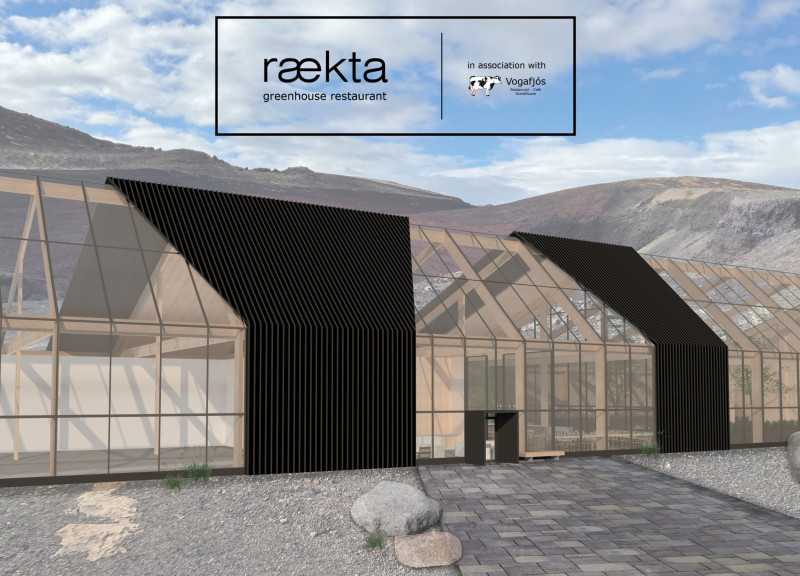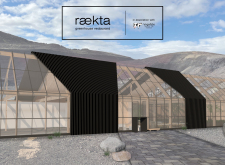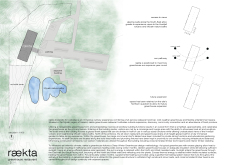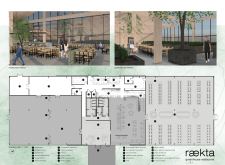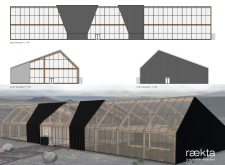5 key facts about this project
The restaurant features a central dining area, surrounded by an operational greenhouse that not only supplies fresh ingredients but also creates a unique dining atmosphere. The extensive use of cross-laminated timber for structural elements provides both aesthetic warmth and durability, aligning with sustainable building practices. Large glass walls facilitate natural lighting and allow views of the volcanic landscape, while the angled roof structure aids in water drainage and contribute to passive heating.
The integration of these elements results in a building that serves various functions, from casual dining to hosting special events. The community-oriented seating arrangement promotes social interaction among guests, reinforcing the restaurant's mission to cultivate a farm-to-table dining experience.
Unique Design Approaches
Rækta distinguishes itself through its architectural approach to sustainability and user experience. The greenhouse concept not only enhances the operational efficiency of the restaurant but also educates patrons about local agriculture. This dual function enhances the dining experience by creating an interactive environment where guests can connect with their food source. The strategic use of passive solar design minimizes energy consumption and optimizes thermal comfort, demonstrating a commitment to ecological principles.
The choice of durable materials, including galvanized steel and reinforced concrete, ensures the building can withstand Iceland's challenging weather conditions while maintaining a visually appealing aesthetic. The architectural form, characterized by its sharp angles and multi-faceted surfaces, is designed to complement the natural topography, creating a seamless transition between indoor and outdoor spaces.
Architectural Details and Functionality
The Rækta project emphasizes adaptability and future growth. The layout has been designed to allow for easy modifications, ensuring the restaurant can respond to changes in culinary trends or community needs. Areas for growing herbs and vegetables are integrated within the restaurant, enabling a continuous supply of fresh produce while enhancing the sensory experience for visitors.
Attention to detail extends to the interior design, where natural materials, earthy tones, and minimalistic furnishings create a calming atmosphere. The spatial arrangement is carefully considered to maximize views of the surrounding landscape while providing an intimate dining experience.
For further insights into the architectural design of Rækta, the presentation includes architectural plans, sections, and designs that illustrate the spatial organization and material selection of the project. Exploring these elements can provide a deeper understanding of the architectural ideas that inform this unique restaurant.


